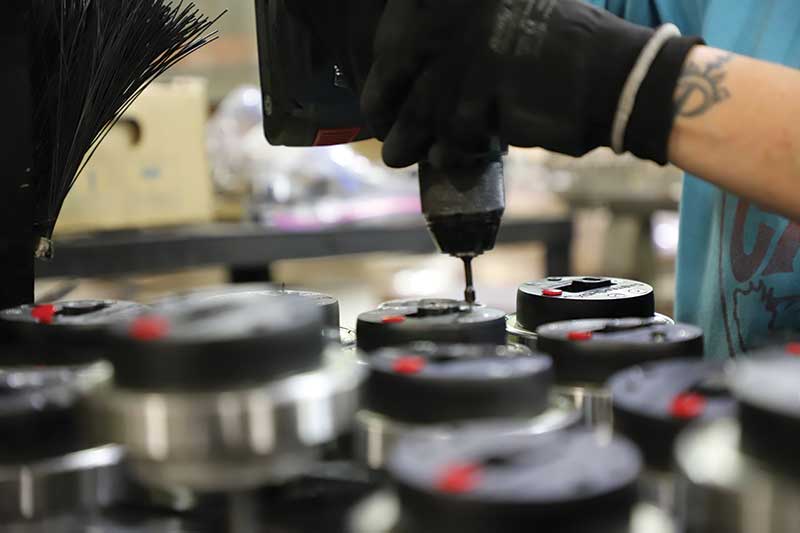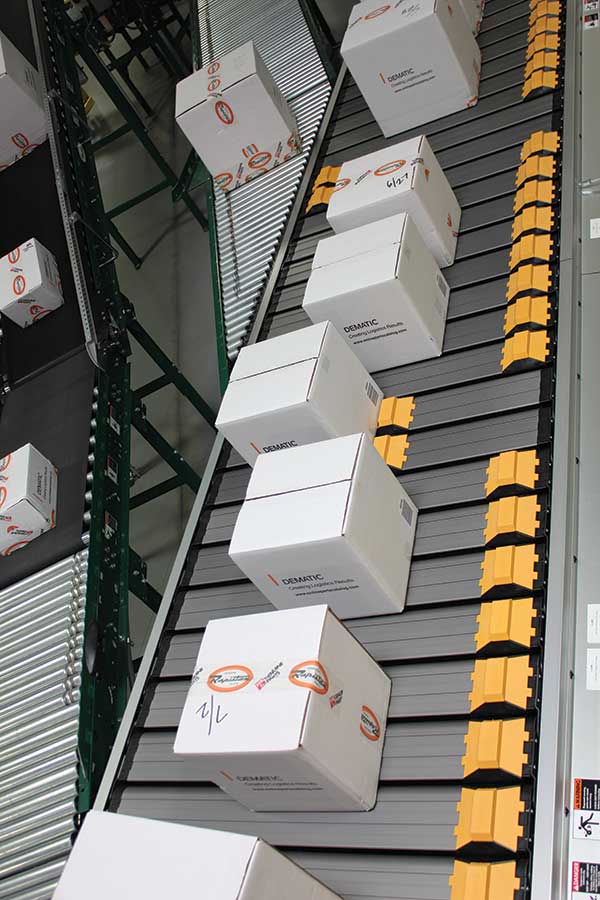Ergonomics update: Hearing protection in the warehouse
Warehouses and DCs turn their focus to protecting workers’ hearing and dimming the noise within the four walls.

Accidents and injuries are costly, and they can take an even steeper toll in a constrained labor environment where employees are scarce and turnover rates are high. By prioritizing safety and ergonomics, companies are creating healthier work environments, improving productivity levels and reducing turnover.
Hearing protection is one area that may get overlooked in the warehouse or DC, which isn’t generally as loud as the typical factory or manufacturing plant. However, conveyors, casters, sorters and other pieces of equipment can converge to create noise that employees have to contend with during long work shifts.
“Preventing physical injuries remains a top priority in the workplace, and the last decade has seen an increased awareness of the importance of noise reduction and mitigation,” says Piyush Patel, product marketing manager at Dematic, whose Noise Reduction portfolio includes a 3D noise mapping audit, analyzation of sound data and solution recommendations.
Preventing hearing loss
The need for noise control in the workplace is very real: According to the Centers for Disease Control and Prevention (CDC), occupational hearing loss is one of the most common workplace injuries.
Forty percent of all transportation and warehousing workers have been exposed to hazardous noise, which is defined as any sound with the frequency, intensity or duration to cause permanent hearing loss.
The bigger problem is that most workers (59%) who are exposed to noise do not wear any type of hearing protection. This creates the potential for hearing loss, which has been linked to tinnitus, heart problems, cognitive decline and mental health concerns.
“As end users become more aware of the risks associated with hazardous noise, there’s an increased effort to reduce noise levels within their facilities,” Patel says. “There’s also a growing trend toward governments regulating noise pollution.”
In certain states, for example, governments limit average noise levels to 80 to 85dbA. “While it’s difficult to enforce, regulators perform surprise inspections that can result in citations or fines if there are violations,” Patel adds. A work environment with hazardous noise levels can also result in injuries. For example, when workers are unable to hear equipment, such as a forklift moving through the warehouse, they can be injured or even suffer fatalities.
Other factors pushing companies to assess warehouse noise levels include a tight labor market; employees who want to work in modernized, safer and quieter facilities; and the fact that newer materials handling equipment is quieter than its older counterparts.
In response, some companies are upgrading their facilities or building new ones that feature reduced noise levels. For example, an existing, or brownfield, warehouse can be upgraded with quieter equipment to reduce noise at the source.
Age-old assumptions about noise levels are also being replaced with more health-conscious mindsets. This is good news for employees who would otherwise just have to “weather out” the din while going about their day-to-day activities.
“Excessive noise is a blind spot within facilities and many people assume that it’s unavoidable, but there is an effective solution,” says Patel, who tells warehouse managers to think about noise injury prevention in the same way that they think about physical injury prevention. “Once hearing is lost, it is impossible to get back, so prevention is of the utmost importance.”
Every facility is different
When developing products that address health-related issues like hearing loss, TAB Industries considers the specific facility and the noise factors related to that DC or warehouse.
This is important because “every facility is different,” says president and CEO Tom Brizek, who sees the current labor shortage as a key impetus behind the drive to reduce facility noise.
“Safety is a driving force in noise reduction, but the scarcity of available workers is also playing a role because warehouses can’t operate without them,” says Brizek. “If you lose team members for an extended period due to health issues, it can impact everything else down the line.”

Brizek says his company’s TAB Wrapper Tornado is an orbital stretch wrap machine that’s built with noise reduction in mind. For example, the company uses rubber drive wheels on the bottom portion of its machines to help soften some of the ring rotation. The machine’s top guide wheels are backed off by about one-eighth of an inch to reduce the friction in that area of the machine. “The only friction that the top guide wheels will emit is from the side-to-side action of the ring as it’s being spun around,” says Brizek.
Factoring in noise when manufacturing warehouse equipment not only protects human ears, but it also allows workers to operate without added ear protection as needed. This, in turn, helps raise operator awareness.
“The quieter you can make a machine,” says Brizek, “the more aware the machine operators are about what’s going on around them.”
Deadening the white noise
To warehouse managers concerned about noise, Brizek recommends hiring an engineering firm to come onsite and conduct a noise level test. This will reveal exactly how many decibels of noise are in a facility—a number that the engineer can compare to permissible levels. Then, the engineer will offer suggestions on how to “deaden the noise.”
Paul O’Connor, head of marketing-Americas at Lenze Americas, says that in the typical warehouse setting, much of the din can be classified as “white noise” that combines all of the audible sound frequencies heard by the human ear. “Warehouses and DCs are generally on the quieter side, but if someone is working there for 8 to 10 hours a day, even white noise leaves their ears ringing as they leave work,” says O’Connor. “Anything that can be done to help prevent that from happening is a competitive advantage.”
O’Connor says Lenze factors a number of “big picture” elements into every product that it makes, and noise is one of those elements. For example, the new o450 magnetic MDR motor-driven roller product is built with motor technology that eliminates gearing inside of the roller itself. This bit of engineering reduces equipment energy consumption, provides higher power capabilities for improved throughput and also runs quieter than most other solutions on the market.
“This product checks a lot of boxes in terms of what our customers want,” O’Connor adds, “with one of those requirements being reduced facility noise.”
Don’t overlook the casters
From a materials handling standpoint, a lot of the noise in a DC is generated by the carts and dollies that carry material throughout the facility. Depending on the situation and the application, there are different ways to solve this issue. For Caster Concepts, one of the newer go-to solutions to the problem are the company’s CasterShoX shock absorption casters.
CasterShoX casters function similarly to conventional spring-loaded casters but with some subtle differences that can help reduce warehouse noise. The product uses patented technology that combines attributes of spring technology and polymer dampening technology to reduce both noise and shock load.

“There’s a shock absorber built into the hub of the wheel,” Douglas Backinger, vice president of sales, explains. “The product has been tested to show a noise reduction of somewhere between 15 to 20 decibels.”
Using shock-absorbing casters can have a substantial positive impact in a facility where hundreds or even thousands of carts, dollies and other pieces of equipment are moving around all day. “We’ve worked with factories in Mexico where, when the trains of carts were going by, employees couldn’t even hear the person next to them talking,” says Backinger. “Then, after they implemented the product, we we’re getting feedback like, “This is the quietest factory I’ve ever been in.”
With that in mind, Backinger cautions warehouse operators not to overlook caster selection when it comes to their impact on facility noise. And don’t just assume that switching to a softer wheel material will do the trick either.
“There are always ways to make your materials handling much quieter,” says Backinger, “but you usually have to go a step further and do some different things with the designs, whether it’s implementing a shock absorption system or changing some of the design features of the casters themselves.”
You want a cure, not a Band-Aid
When thinking about noise reduction within their facilities, managers should consider the problem holistically to define the right goals.
That way, you don’t wind up using a patchwork approach to a problem that could impact employee health, operational throughput and productivity. And in some cases, it could get you in hot water for not complying with any noise-related regulations or requirements.
“When warehouse managers are shopping for new equipment that can reduce noise within a warehouse, it’s important to partner with an expert that offers a portfolio to reduce noise at the source. You want a cure, not a Band-Aid.” -Patel concludes

Article Topics
Caster Concepts News & Resources
Ergonomics update: Hearing protection in the warehouse Caster Concepts expands manufacturing facility in Albion, Mich. Tuggers, carts and casters: Evolving the wheel for automation Caster Concepts acquires Aerol Co., expanding its services to aerospace and defense Caster rig improves tire manufacturer’s initial push force Caster Concepts Demonstrates New Ergonomic Rig and Accessories Caster Concepts acquires Ohio-based golf equipment manufacturer More Caster ConceptsLatest in Materials Handling
Warehouse technology company Synergy Logistics promotes Brian Kirst to Chief Commercial Officer Seegrid names Abe Ghabra as Chief Operating Officer GRI appoints Ydo Doornbos as its director for North America ISM May Semiannual Report signals growth in 2024, at a reduced rate 11th annual National Forklift Safety Day to be hybrid event, on June 11 PAC Machinery announces leadership transition Motion Industries to acquire automation company More Materials HandlingAbout the Author
Subscribe to Materials Handling Magazine

Find out what the world's most innovative companies are doing to improve productivity in their plants and distribution centers.
Start your FREE subscription today.
May 2024 Modern Materials Handling

Latest Resources










